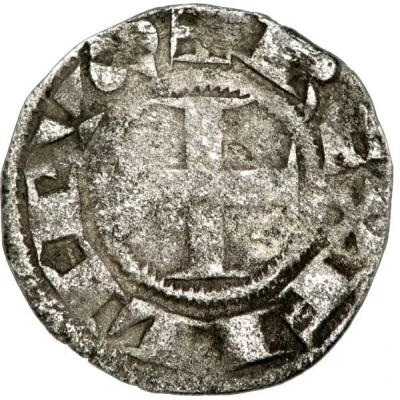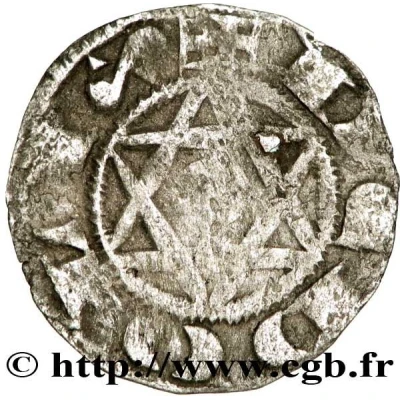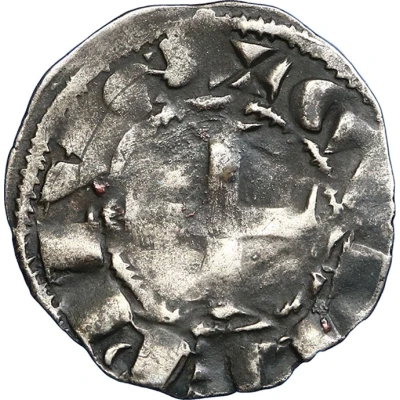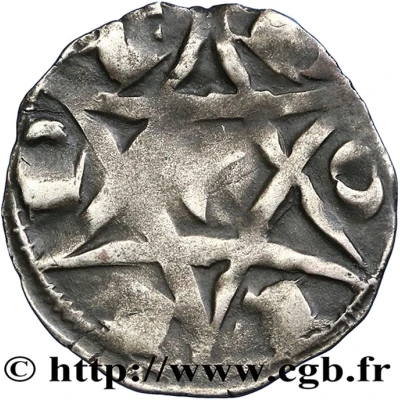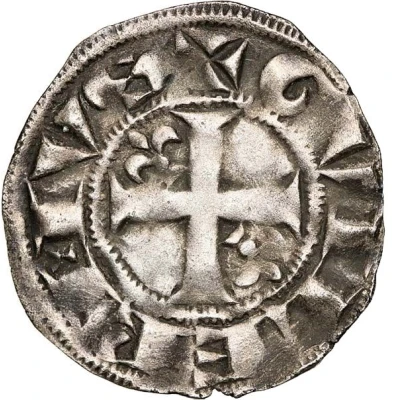
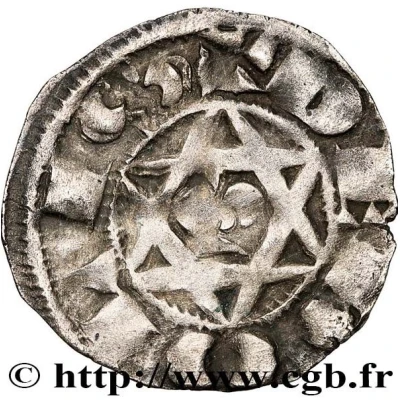

© CGB
Denier - William I of Chauvigny lily ND
| Billon | 0.88 g | 19 mm |
| Issuer | Lordship of Déols (French States) |
|---|---|
| Lord | William I of Chauvigny (1207-1234) |
| Type | Standard circulation coin |
| Years | 1207-1233 |
| Value | 1 Denier (1⁄240) |
| Composition | Billon |
| Weight | 0.88 g |
| Diameter | 19 mm |
| Shape | Round (irregular) |
| Technique | Hammered |
| Orientation | Variable alignment ↺ |
| Demonetized | Yes |
| Updated | 2024-10-04 |
| Numista | N#335105 |
|---|---|
| Rarity index | 97% |
Reverse
Hexalpha with lily.
Script: Latin
Lettering: ✠ DEDOLIഗ
Unabridged legend: De Dolis
Translation: ... of Deols.
Comment
The House of Déols first appeared in the 10th century, founded by Ebbes I le Noble (896-937). Ebbes II succeeded Raoul VI (1099-1141), then installed his youngest son Eudes at the head of the seigneury of Châteaumeillant (1160-1220). In Déols, Raoul VII, his eldest son, inherited (1160-1176). When he died, his daughter Denise was a minor, and Déols ran into many problems, passing into the House of Chauvigny. Three "Guillaume" succeeded each other as lord of Châteauroux: Guillaume I (1207-1233), Guillaume II (1233-1270), Guillaume III (1270-1322). The homonymy of these names makes it difficult to determine the chronology of Châteauroux coinage.Interesting fact
One interesting fact about this coin is that it features the image of a lily, which was a symbol of purity and nobility in medieval France. The lily was also associated with the French monarchy, and its use on this coin may indicate that William I of Chauvigny was seeking to emphasize his connection to the royal court.
